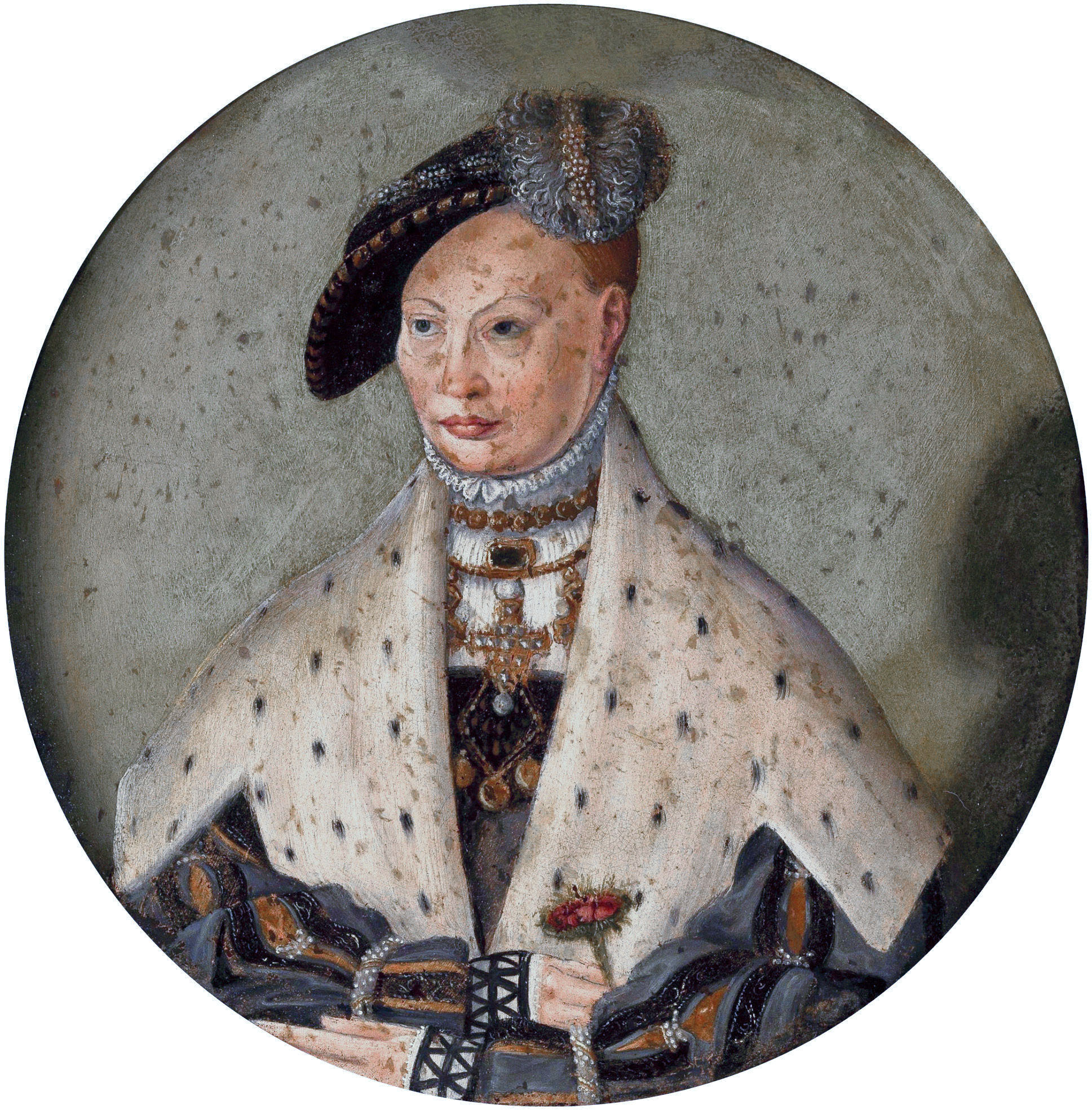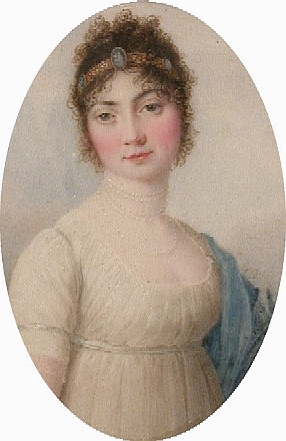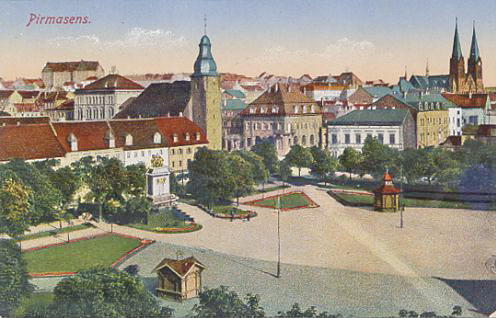|
Countess Maria Louise Albertine Of Leiningen-Dagsburg-Falkenburg
Countess Maria Louise Albertine of Leiningen-Dagsburg-Falkenburg (16 March 1729 – 11 March 1818); also known as ''Princess George'', was heiress to the barony of Broich and by marriage Princess of Hesse-Darmstadt. She was the grandmother and educator of Princess Louise of Mecklenburg-Strelitz, who later became Queen consort of Prussia. Life Countess Maria Louise Albertine was a daughter of Count Christian Karl Reinhard of Leiningen-Dagsburg-Falkenburg (1695–1766) and his wife Countess Katharina Polyxena of Solms-Rödelheim und Assenheim (1702–1765). After the death of her father, she was heiress to the barony of Broich and began with the architect Nicolas de Pigage, the restoration and expansion of the Castle Broich. In 1806, the government of Broich was dissolved by Napoleon and in 1815 Broich was annexed by Prussia. On 16 March 1748, she married Prince George William of Hesse-Darmstadt, the brother of the reigning Landgrave Louis IX of Hesse-Darmstadt in Heidesh ... [...More Info...] [...Related Items...] OR: [Wikipedia] [Google] [Baidu] |
Johann Christian Fiedler
Johann Christian Fiedler (31 October 1697, Pirna - 5 September 1765, Darmstadt) was a German portrait painter. Some sources give his year of death as 1768. Biography His father was a brewmaster and his mother's family had long served in the city government of Pirna. He graduated from the Lateinschule there then, around 1715, went to Leipzig to study law. As it turned out, he was more interested in art and began painting miniatures that he displayed in 1719 at a fair in Braunschweig. Upon returning to Leipzig, he attempted to teach himself oil painting. In 1720, with the financial support of Augustus William, Duke of Brunswick-Luneburg, he went to Paris, where he studied with Hyacinthe Rigaud and Nicolas de Largillière. from '' |
Queen Consort Of Prussia
The Queen of Prussia (german: Königin von Preußen) was the queen consort of the ruler of the Kingdom of Prussia, from its establishment in 1701 to its abolition in 1918. As all rulers of Prussia had to be male, there was never a Queen regnant of Prussia. Until 1806, the Queen of Prussia was also Electress of Brandenburg; after 1871, she was also German Empress. Until 1772, her title was ''Queen in Prussia'' (see King in Prussia). Duchess of Prussia Queens in Prussia Queens of Prussia Spouses of the pretenders See also * List of consorts of Brandenburg *List of German queens *Princess of Orange * Princess of Neuchâtel * Duchess of Saxe-Lauenburg * Grand Duchess of Posen *List of consorts of Hohenzollern * List of monarchs of Prussia {{DEFAULTSORT:List Of Prussian Consorts Prussia, List of consorts of Prussia, List of consorts of Consorts __NOTOC__ Consort may refer to: Music * "The Consort" (Rufus Wainwright song), from the 2000 album ''Poses'' * Consor ... [...More Info...] [...Related Items...] OR: [Wikipedia] [Google] [Baidu] |
Duchess Therese Of Mecklenburg-Strelitz
, image = Theresa of Mecklenburg-Strelitz.jpg , caption = , reign = 25 May 1789 – 15 July 1827 , coronation = , succession = Princess consort of Thurn and Taxis , spouse = , issue = Princess Charlotte LuisePrince Georg Karl Maria Theresia, Princess Esterházy of GalánthaPrincess Luise Friederike Maria Sophia, Duchess Paul Wilhelm of WürttembergMaximilian Karl, 6th Prince of Thurn and TaxisPrince Friedrich Wilhelm , house = Mecklenburg-Strelitz , father = Charles II, Grand Duke of Mecklenburg , mother = Princess Friederike of Hesse-Darmstadt , birth_date = , birth_place = Hanover, Electorate of Hanover , death_date = , death_place = Regensburg, Kingdom of Bavaria , burial_place = St. Emmeram's Abbey , religion = Lutheran Duchess Therese Mathilde Amalie of Mecklenburg-Strelitz (german: Herzogin Therese Mathilde Amalie zu Mecklenburg-Strelitz; 5 April 1773 – 12 February 1839) was a member of t ... [...More Info...] [...Related Items...] OR: [Wikipedia] [Google] [Baidu] |
Debit Commission
A debit commission (from the Latin ''debere'' "to owe") was in the Holy Roman Empire a means to resolve the problems of over-indebted states. These states were usually, but not always, sovereign Imperial States. Imperial commissions The Aulic Council was entitled to delegate its authority to an "imperial commission". Such a commission could be tasked to deal with all subject matter for which the Aulic Council itself was responsible. In about three quarters of all cases, the Council did this at the request of one of the parties in a case before the Council. To what extent the Council used commissions has not yet been exhaustively researched. This is partly due to the fact that Council would often delegate organizational matters to an imperial commission, such as regulating an inheritance of guardianship. Only a small subset of the imperial commissions were used to resolve legal disputes. During the reign of Emperor Ferdinand III, 650 such commissions were documented. In ove ... [...More Info...] [...Related Items...] OR: [Wikipedia] [Google] [Baidu] |
Frederick, Duke Of Saxe-Altenburg
Frederick, Duke of Saxe-Hildburghausen (29 April 1763 in Hildburghausen – 29 September 1834 in Altenburg), was duke of Saxe-Hildburghausen (1780–1826) and duke of Saxe-Altenburg (1826–1834). Biography He was the youngest child, but only son, of Ernst Frederick III, Duke of Saxe-Hildburghausen, by his third wife, Princess Ernestine of Saxe-Weimar. Succession Frederick succeeded his father Duke of Saxe-Hildburghausen in 1780, when only seventeen years old; because of this, his great grand uncle, the prince Joseph of Saxe-Hildburghausen, assumed the regency on his behalf, this regency only ended in 1787 at the death of Prince Joseph. Until 1806 he was subject to the restrictions of the imperial debit commission, which had placed the duchy of Saxe-Hildburghausen under official administration, because of his predecessors' dissolute financial policy. In 1806 Frederick joined the Confederation of the Rhine, and in 1815 the German Confederation, under whose guarantee he gave ... [...More Info...] [...Related Items...] OR: [Wikipedia] [Google] [Baidu] |
Duchess Charlotte Georgine Of Mecklenburg-Strelitz
, succession = Duchess consort of Saxe-Hildburghausen , image = Charlottesahi1800.JPG , caption = The Duchess of Saxe-Hildburghausen, 1800 , reign = 3 September 1785 – 14 May 1818 , spouse = , issue = , issue-link = #Marriage and issue , issue-pipe = among others... , house = Mecklenburg-Strelitz , father = Charles II, Grand Duke of Mecklenburg , mother = Princess Friederike of Hesse-Darmstadt , birth_date = , birth_place = Hanover, Electorate of Hanover, Holy Roman Empire , death_date = , death_place = Hildburghausen, Duchy of Saxe-Hildburghausen, German Confederation , burial_date = , burial_place= , religion = Lutheran } Duchess Charlotte Georgine of Mecklenburg-Strelitz (Charlotte Georgine Luise Friederike; 17 November 1769 – 14 May 1818) was a member of the House of Mecklenburg-Strelitz and a Duchess of Mecklenburg-Strelitz by birth and a Duchess of Saxe-Hildburghausen through her marriage ... [...More Info...] [...Related Items...] OR: [Wikipedia] [Google] [Baidu] |
Charles II Of Mecklenburg-Strelitz
Charles II (Charles Louis Frederick; 10 October 1741 – 6 November 1816) was ruler of the state of Mecklenburg-Strelitz from 1794 until his death. Originally ruling as duke, he was raised to the rank of grand duke in 1815. Prior to succeeding to the throne, he served as Governor of Hanover from 1776 to 1786. Early life and service in Hanover Duke Charles Louis Frederick of Mecklenburg was born in Mirow, the second son of Duke Charles Louis Frederick of Mecklenburg and his wife Princess Elisabeth Albertine of Saxe-Hildburghausen. On 11 December 1752 his uncle Adolphus Frederick III died and was succeeded by Charles's older brother, who became Adolphus Frederick IV. With his brother's accession Charles was taken with the rest of the family from Mirow to the capital Strelitz. From the age of four, Charles looked set for a career in Hanoverian service after being given a Captain's commission. His sister Charlotte married the Elector of Hanover, King George III of the United King ... [...More Info...] [...Related Items...] OR: [Wikipedia] [Google] [Baidu] |
Duke
Duke is a male title either of a monarch ruling over a duchy, or of a member of royalty, or nobility. As rulers, dukes are ranked below emperors, kings, grand princes, grand dukes, and sovereign princes. As royalty or nobility, they are ranked below princess nobility and grand dukes. The title comes from French ''duc'', itself from the Latin language, Latin ''dux'', 'leader', a term used in Roman Republic, republican Rome to refer to a military commander without an official rank (particularly one of Germanic peoples, Germanic or Celts, Celtic origin), and later coming to mean the leading military commander of a province. In most countries, the word ''duchess'' is the female equivalent. Following the reforms of the emperor Diocletian (which separated the civilian and military administrations of the Roman provinces), a ''dux'' became the military commander in each province. The title ''dux'', Hellenised to ''doux'', survived in the Eastern Roman Empire where it continued in sev ... [...More Info...] [...Related Items...] OR: [Wikipedia] [Google] [Baidu] |
Darmstadt
Darmstadt () is a city in the state of Hesse in Germany, located in the southern part of the Rhine-Main-Area (Frankfurt Metropolitan Region). Darmstadt has around 160,000 inhabitants, making it the fourth largest city in the state of Hesse after Frankfurt am Main, Wiesbaden, and Kassel. Darmstadt holds the official title "City of Science" (german: link=no, Wissenschaftsstadt) as it is a major centre of scientific institutions, universities, and high-technology companies. The European Organisation for the Exploitation of Meteorological Satellites (EUMETSAT) and the European Space Operations Centre (ESOC) are located in Darmstadt, as well as GSI Centre for Heavy Ion Research, where several chemical elements such as bohrium (1981), meitnerium (1982), hassium (1984), darmstadtium (1994), roentgenium (1994), and copernicium (1996) were discovered. The existence of the following elements were also confirmed at GSI Centre for Heavy Ion Research: nihonium (2012), flerovium ... [...More Info...] [...Related Items...] OR: [Wikipedia] [Google] [Baidu] |
Pirmasens
Pirmasens (; pfl, Bärmesens (also ''Bermesens'' or ''Bärmasens'')) is an independent town in Rhineland-Palatinate, Germany, near the border with France. It was famous for the manufacture of shoes. The surrounding rural district was called ''Landkreis Pirmasens'' from 1818 until 1997, when it was renamed to '' Südwestpfalz''. Pirmasens can be easily mistaken with ''Primasens'', of which means a first sense in Latin-derived languages (the first sense in Latin would be "primus sensus"). History Early years The first mention of "Pirminiseusna", a colony of Hornbach Abbey, dates from 860. The name derives from St. Pirminius, the founder of the monastery. During the period it was under rule of the Bishopric of Metz. It was passed to Diocese of Speyer in last the quarter of the 11th century, then was captured by County of Saarbrücken in 1100. In 1182, the County of Saarbrücken was divided by Simon II and Henry I, who were sons of Simon I. Pirmasens was given to the latter an ... [...More Info...] [...Related Items...] OR: [Wikipedia] [Google] [Baidu] |
Heidesheim Am Rhein
Heidesheim am Rhein is an ''Ortsbezirk'' (borough) of the town Ingelheim am Rhein in the Mainz-Bingen district in Rhineland-Palatinate, Germany. Before July 2019, it was a separate municipality belonging to the former ''Verbandsgemeinde'' (a kind of collective municipality) Heidesheim am Rhein, of which it was the administrative seat. Heidesheim was one of the biggest municipalities in Rhenish Hesse. Geography Location Heidesheim lies in northern Rhenish Hesse, on the so-called Rhine Knee, west of the state capital, Mainz. The municipal area reaches in the north up to the middle of the Rhine's navigational lane, which here reaches one of its greatest breadths, comprising even the ''Königsklinger Aue'' (an island, although its name identifies it as a floodplain). At the bank behind the floodwall, at an elevation of some 82 m, it abuts a sandy plain which is used especially for growing asparagus and which is also covered in fruit trees. Just behind the floodwall is the o ... [...More Info...] [...Related Items...] OR: [Wikipedia] [Google] [Baidu] |
Louis IX, Landgrave Of Hesse-Darmstadt
Louis IX of Hesse-Darmstadt (german: Ludwig) (15 December 1719 – 6 April 1790) was the reigning Landgrave of Hesse-Darmstadt from 1768 to 1790. Louis IX and his wife became the most recent common ancestors of all current European monarchs on 8 September 2022 after Queen Elizabeth II of the United Kingdom, who was not a descendant, died and her son, Charles III, a descendant through his father, became king. Overview Louis IX was a son of Louis VIII, Landgrave of Hesse-Darmstadt, and Charlotte of Hanau-Lichtenberg and Müntzenberg. He was born in Darmstadt on 15 December 1719. On 12 August 1741, Louis married Caroline, daughter of Christian III, Duke of Zweibrücken. They had three sons and five daughters, including: * Princess Caroline of Hesse-Darmstadt (1746–1821), married Frederick V, Landgrave of Hesse-Homburg * Princess Frederica Louisa of Hesse-Darmstadt (1751–1805), married King Friedrich Wilhelm II of Prussia and became Queen of Prussia * Prince Louis ... [...More Info...] [...Related Items...] OR: [Wikipedia] [Google] [Baidu] |




